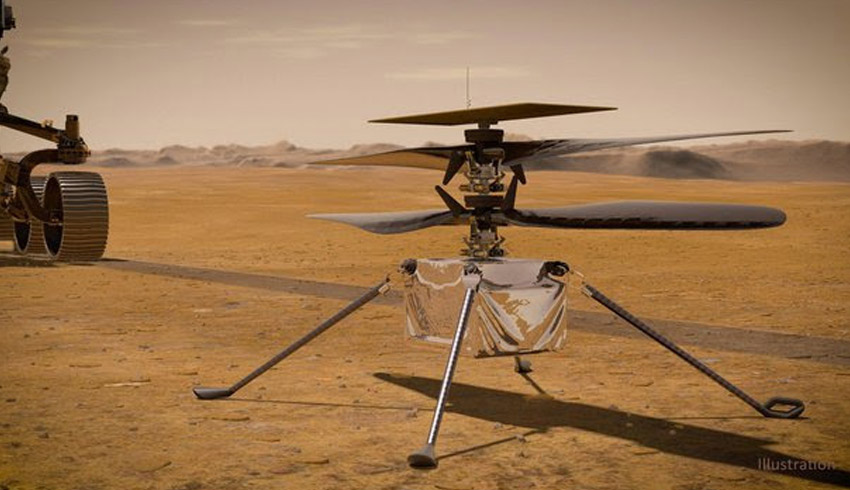
In its eighth flight, Ingenuity flew further than engineers as NASA’s California-based Jet Propulsion Laboratory expected to be possible, as the helicopter again defied expectations and performed exactly as programmed.
The flight took place on Monday, 21 June, and lasted a total of 77.4 seconds.
The Mars helicopter again flew 10 metres into the air, for a total horizontal distance of 160 metres to a brand new landing spot that NASA dubbed ‘Airfield E’.
Ingenuity landed about 135 metres away from the Perseverance rover, which is vital for sending programming information from the Earth to the rotorcraft.
NASA has not been providing formal status updates on Ingenuity since before its seventh flight, likely as Ingenuity’s creators were not expecting the strong-willed rotorcraft to continue to function past its fifth test flight.
It is expected that NASA’s JPL team will continue to test the upper extent of Ingenuity’s abilities.
Following Ingenuity’s fourth successful flight, Thomas Zurbuchen, associate administrator for NASA’s Science Mission Directorate, claimed the Ingenuity program had been a “resounding success”.
“Since Ingenuity remains in excellent health, we plan to use it to benefit future aerial platforms while prioritising and moving forward with the Perseverance rover team’s near-term science goals,” he said.
Since as early as its third flight, it was confirmed that Ingenuity’s career may be short-lived, at least according to MiMi Aung, the helicopter’s project manager at JPL.
NASA confirmed that it intends to push the rotorcraft to its upper physical limits, testing the extent of its speed, height and range limits.
“We will be pushing the envelope,” Aung said. “And, ultimately, we expect the helicopter will meet its limits.”
Ingenuity is a solar-powered rotorcraft vehicle that boasts twin propellers, a metallic body, four legs, and weighs just under two kilograms (on Earth).
It was sent aboard NASA’s Perseverance Mars rover in February to complete one mission: prove that it could fly in Mars’ atmosphere, which varies significantly from that of Earth.
While Mars has much less gravitational pull than Earth, its atmosphere is just 1 per cent as dense, making it difficult to generate lift.
As such, the engineers of Ingenuity gave the aircraft four-foot long rotor blades that spin at higher speeds than would be required on Earth.

Hannah Dowling
Writer – Defence and Aerospace, Momentum Media
Hannah joined Momentum as a journalist in 2019, and has since written breaking news stories across a diverse range of corporate industries, including finance, real estate, investments and aviation. She has a keen interest in the global aviation sector, with a particualy focus on improving overall individual wellbeing across the aerospace industry.
Hannah graduated from Macquarie University in Sydney Australia with a Bachelor of Media (Journalism) and is currently pursuing postgraduate studies.
Send Hannah an email at [email protected] or connect via Twitter or LinkedIn.
Receive the latest developments and updates on Australia’s space industry direct to your inbox. Subscribe today to Space Connect here.









